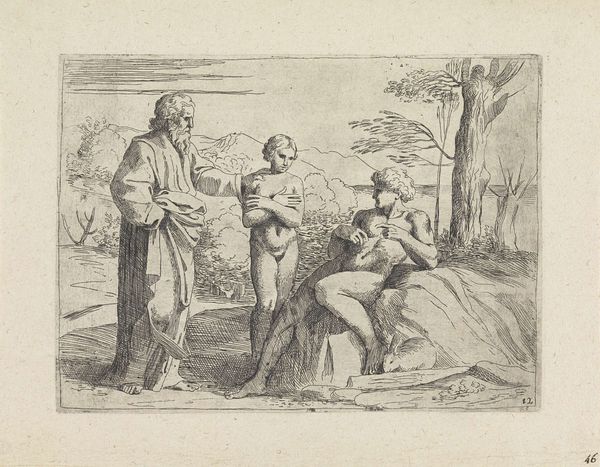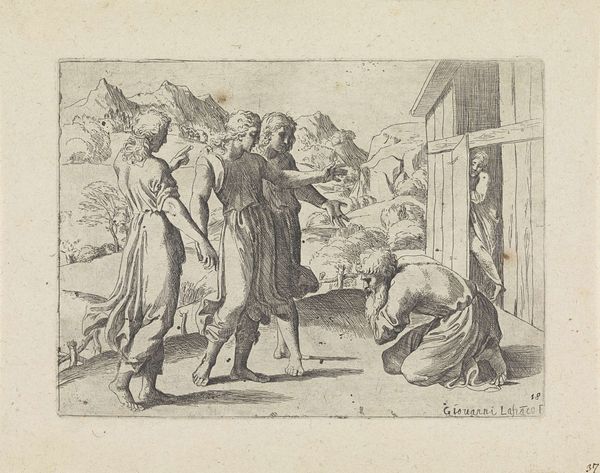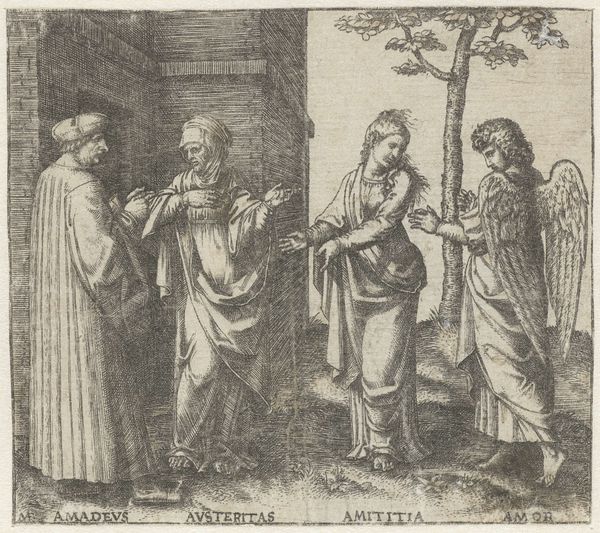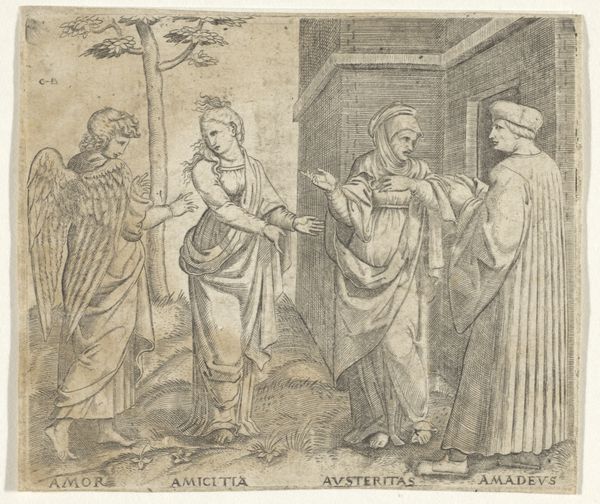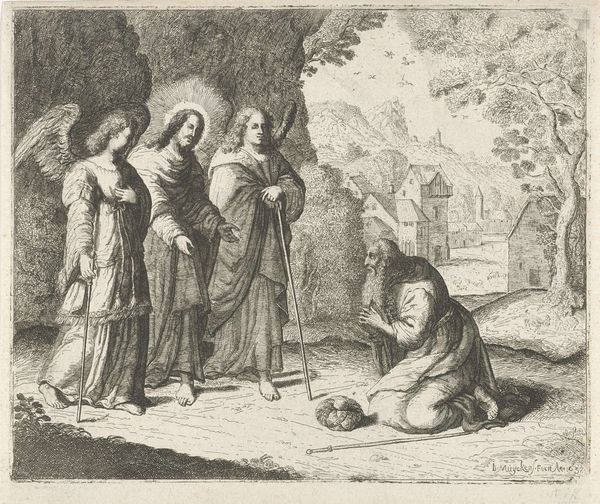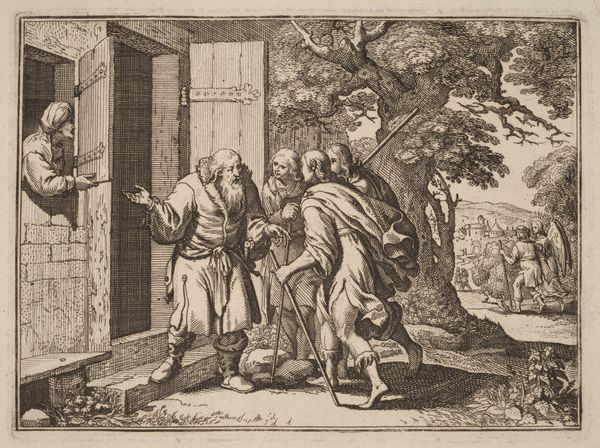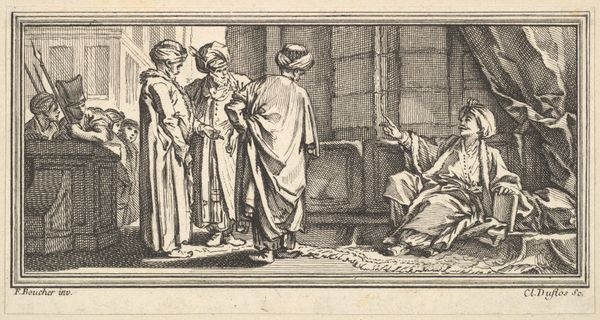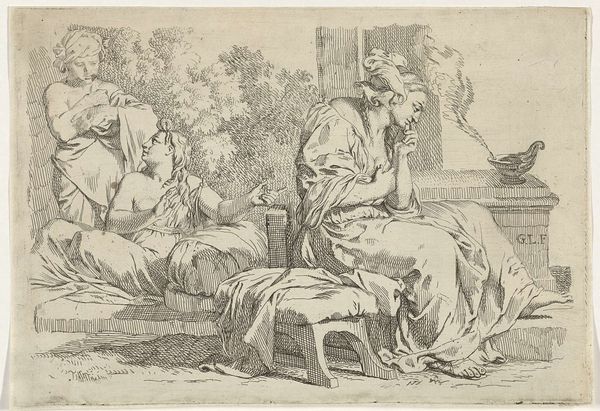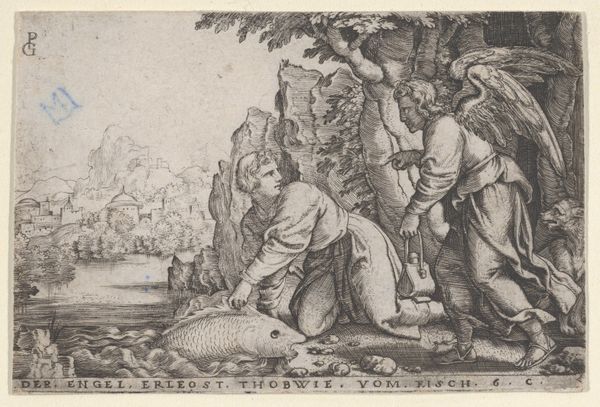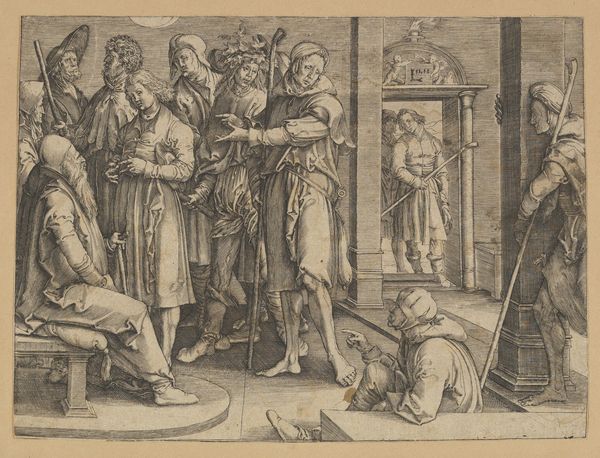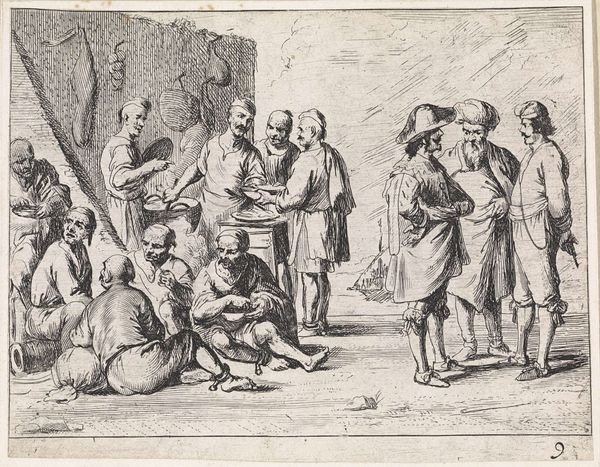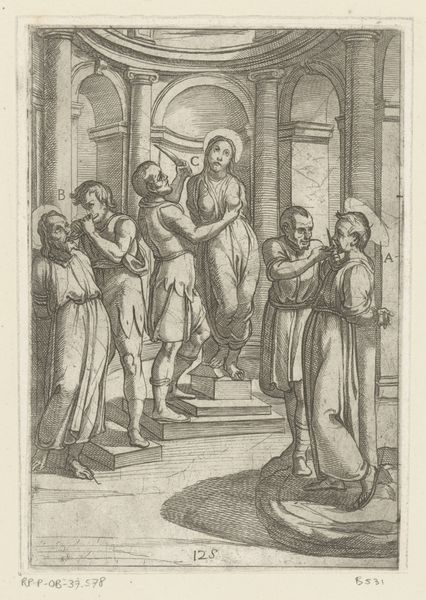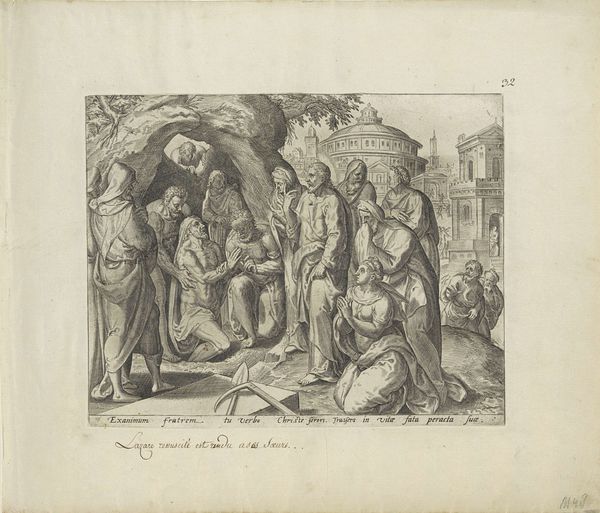
drawing, print, etching
#
drawing
#
aged paper
#
toned paper
#
light pencil work
#
narrative-art
# print
#
etching
#
pencil sketch
#
sketch book
#
landscape
#
figuration
#
personal sketchbook
#
sketchwork
#
line
#
sketchbook drawing
#
history-painting
#
storyboard and sketchbook work
#
italian-renaissance
#
sketchbook art
Dimensions: height 132 mm, width 179 mm
Copyright: Rijks Museum: Open Domain
Editor: Here we have Sisto Badalocchio’s etching, *Jakob en Laban met Lea en Rachel,* created around 1607. There's a clear narrative quality to this, with the figures posed dramatically against a landscape. What's your take on its historical significance? Curator: Well, looking at this etching, what immediately strikes me is how Badalocchio navigates the visual politics of religious imagery at the time. Consider the historical context: the Counter-Reformation was in full swing, and there was intense scrutiny of artistic depictions of biblical scenes. How does this image engage with those concerns, do you think? Editor: I suppose by presenting it as almost a casual scene, like a sketch from a sketchbook, the etching seems to avoid the grandiosity often associated with religious works, thereby circumventing some of the stricter interpretations of appropriate religious art. Curator: Precisely! The format – an etching, with its inherent qualities of line and tonal variation – contributes to this effect. The turn to printmaking allowed artists like Badalocchio to disseminate these narratives more widely, bypassing some of the established power structures of patronage and display associated with larger-scale paintings. It’s about accessibility, both visually and socio-economically. Editor: So, it’s not just a biblical scene; it's making a subtle commentary on art's role within the church and society? Curator: Exactly. The very act of choosing this moment from the Jacob story, and presenting it in this medium, speaks to a desire to democratize religious narratives, placing them within a more accessible, perhaps even domestic, sphere. The sheep on the left could even function as an argument for art in everyday life, almost like domestic icons in a byzantine iconographic. Editor: I never considered the dissemination aspect and the power dynamics involved. That really changes my perception of the image! Curator: That’s the joy of art history: to consider not just what is depicted, but also how and why it’s being presented at a specific historical moment.
Comments
No comments
Be the first to comment and join the conversation on the ultimate creative platform.
